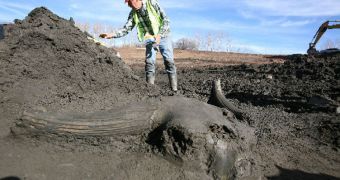When experts began excavations at an ancient dig site in west-central Colorado, they immediately started finding bones and fossils. With time, however, the dig grew so massive that the original team needed to call in reinforcements from surrounding areas to help with the effort.
In the end, this turned out to be the best decision, since the large-scale mobilization ended in success. By the end of the project – which lasted for seven weeks – researchers had dug up 4,826 large bones from animals such as mastodons, mammoths and bison.
Other large species that were represented in the deposit included giant ground sloths, deer, camels, and horses. In addition, experts also uncovered thousands upon thousands of fossils and bones belonging to smaller species, such as for example rodents and salamanders.
After the reinforcements arrived, the scientists and other volunteer diggers that originally began the work had many more hands at their disposal. About 15 educators from the surrounding valley joined in on the effort as well.
Together, the diggers excavated thousands of artifacts, which they say date from between 150,000 to 50,000 years ago, LiveScience reports. The excavation efforts were closed on Sunday, July 3.
“You always describe to the students the size of the animals, but when you are actually holding the bone, it really brings it home,” explains Colorado Mountain College archeology and anthropology teacher Sandy Jackson.
All the remains the team managed to collect laid in what was once the bed of an ancient lake. “Animals, plants, insects, even small crustaceans all piled on top of one another,” Ian Miller explains.
The expert, who is the curator of paleontology at the Denver Museum of Nature & Science, says that conducting the works was “as if we are reading from the pages of the history of life in the Rockies.”
Aspen High School science teacher Andre Wille echoes the same feelings. On his last day of digs, the teacher discovered the well-preserved jaw of a massive mastodon. “It is massive, like the size of a table, a small table, very large and powerful, and obviously prehistoric,” he says.
“I found a lot of other great things, but that definitely topped it,” Wille adds. Museum scientists were joined in the effort by a total of 250 trained paleontology volunteers and numerous educators.

 14 DAY TRIAL //
14 DAY TRIAL //